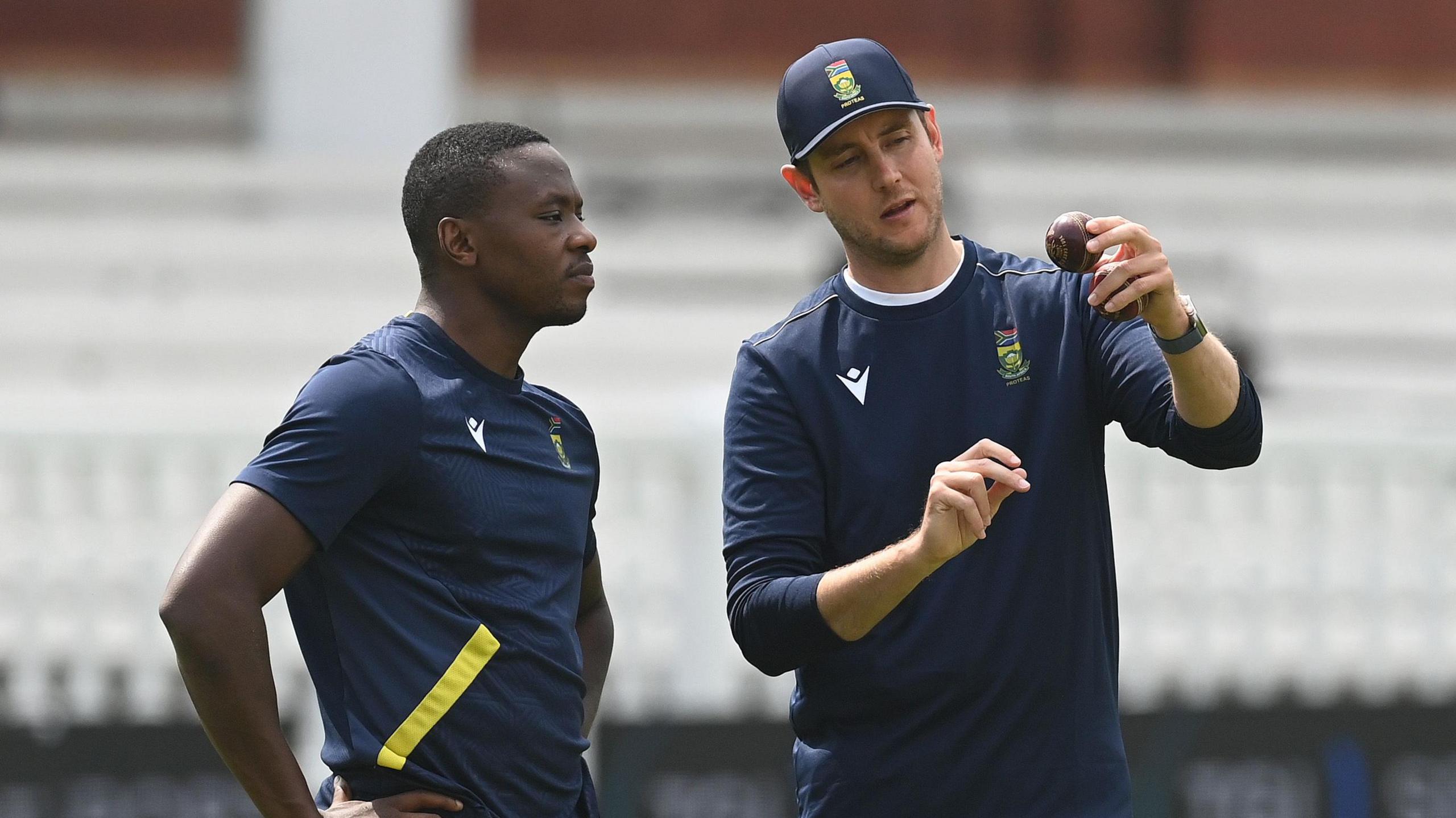To play this video you need to enable JavaScript in your browser.
- 26 Comments
South Africa fast bowler Kagiso Rabada has joined an elite Lord’s club of two.
Famously, any player who takes five wickets or scores a century in a Test match has their name etched on to an honours board in gold lettering.
Before the first day of the World Test Championship (WTC) final, only one other Test player in the storied 141-year history of the longer format at Lord’s has appeared on the honours board in both the home and away dressing rooms.
That quirky mark of cricket trivia belonged to legendary West Indies opener Gordon Greenidge.
His knocks of 214 not out and 103 against England in 1984 and 1988 respectively adorn the board in the away dressing room.
But less well known is the fact he is also on the home dressing room for the 122 he made for the Marylebone Cricket Club (MCC) against the Rest of the World in 1987.
With South Africa allocated the home dressing room for the WTC final at the home of cricket, Rabada’s five-wicket haul was enough to see him join Greenidge in the exclusive club.
A piece of sticky batting tape with Rabada’s name written on it in pen has been attached to the board for his figures of 5-51, as is the tradition for players during matches. The gold lettering should soon follow.
And with no place for neutral Tests at Lord’s on the honours board since they were refurbished in 2018 it may well be stencilled on there permanently.
Did England great Broad help Rabada?
Perhaps he benefited from some insider trading from the fast bowlers’ union to achieve the feat.
In a savvy move, South Africa engaged the services of Stuart Broad – a man who is on the honours board for batting and bowling – in the build-up to this match.
They did so on the premise the former England bowler could impart some pearls of wisdom on a ground where he took 113 wickets.
Rabada must have been eagerly taking notes – CricViz data showed that 84% of Rabada’s deliveries on day one were on a good length, which is the most of any innings in his career.
His dismissal of Australia opener Usman Khawaja, with a delivery from round the wicket which squared the left-hander up and took the edge, was Broadian by nature.
“Stuart gave us a few pointers on certain field placings and in general with the conditions with cloud cover and wind,” acknowledged Rabada, who has the second-best strike-rate (39.1) in the history of the game of bowlers with 100 wickets or more (beaten only by England’s George Lohmann, who took his wickets every 34.1 balls between 1886 and 1896).
There was also a redemption element of sorts to Rabada’s efforts with the ball.
The 30-year-old fast bowler had come into the match with something of a cloud hanging over him having recently served a short ban for recreational drug use.
“It wasn’t my best moment, as I have alluded to,” Rabada said, in a matter-of-fact manner.
“Life moves on. Every game that I play for South Africa, I try to do my best.”
On a day when 14 wickets fell at Lord’s it would be easy to assume the South Africa quick bowler’s five-wicket haul could be attributed to other factors.
“For day one of a Lord’s Test match, it was below average in terms of movement through the air, and just about average for deviation off the pitch,” said TMS scorer Andy Zaltzman.
“So that comes down to quality of bowling and consistency.”
Rabada also moved above legendary fast bowler Allan Donald and up to fourth on South Africa’s all-time Test wicket-takers list as he took his tally to 332 victims.
The three men above him on South Africa’s all-time list are Makhaya Ntini (390), Shaun Pollock (421) and Dale Steyn (439).
“As a player, growing up and representing South Africa, I have been inspired by those who have come before and seen what they have done on the big stage,” he added.
Related topics
- South Africa
- Australia
- Cricket
Source: BBC

Leave a Reply